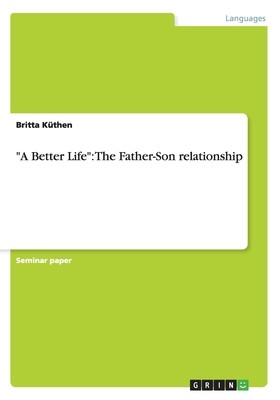| "A Better Life": The Father-Son relationship Contributor(s): Küthen, Britta (Author) |
|
 |
ISBN: 3656494789 ISBN-13: 9783656494782 Publisher: Grin Verlag OUR PRICE: $36.01 Product Type: Paperback Published: September 2013 |
| Additional Information |
| BISAC Categories: - Language Arts & Disciplines | Study & Teaching |
| Physical Information: 0.04" H x 7" W x 10" (0.12 lbs) 20 pages |
| Descriptions, Reviews, Etc. |
| Publisher Description: Seminar paper from the year 2012 in the subject English - Applied Geography, grade: 1,0, University of Duisburg-Essen (Nordamerikastudien), course: Crossing Borders - Mexican-American Border in American Literature, language: English, abstract: More than ten million unauthorized immigrants live in the United States according to a report of the United States Department of Homeland Security from January 2010 (cf. Hoefer et. al.). More than six million of the unauthorized immigrants came from Mexico (ibid.). "Unauthorized immigrants" are defined as all foreign-born non-citizens residing in the United States without permit of residence or valid visa (ibid.). They are also referred to as "illegal immigrants" or "aliens" (cf. Garcia 104). Most illegal immigrants in the United States live in families where the adults are undocumented, but the children were born in the USA and therefore legal U.S. citizens (cf. Passel). The film "A Better Life" tells a story which is based on such a social background. It is the story of Carlos Galindo, an illegal immigrant from Mexico, and his son Luis, who is a legal U.S. citizen, because he was born in the United States (cf. A Better Life 2011). The film was directed by Chris Weitz and published in the USA in June 2011 (cf. ibid.). The film is set in East Los Angeles, a district of the City of Los Angeles which is mainly inhabited by people of Mexican descent (cf. Garcia 82). This term paper concentrates on the father-son relationship between Carlos and Luis Galindo and its development over the course of the film. Following this introduction, the first part of the second chapter contains the characterizations of Carlos Galindo and his son Luis. The characterizations show the core characteristics and attitudes of the two main characters. |